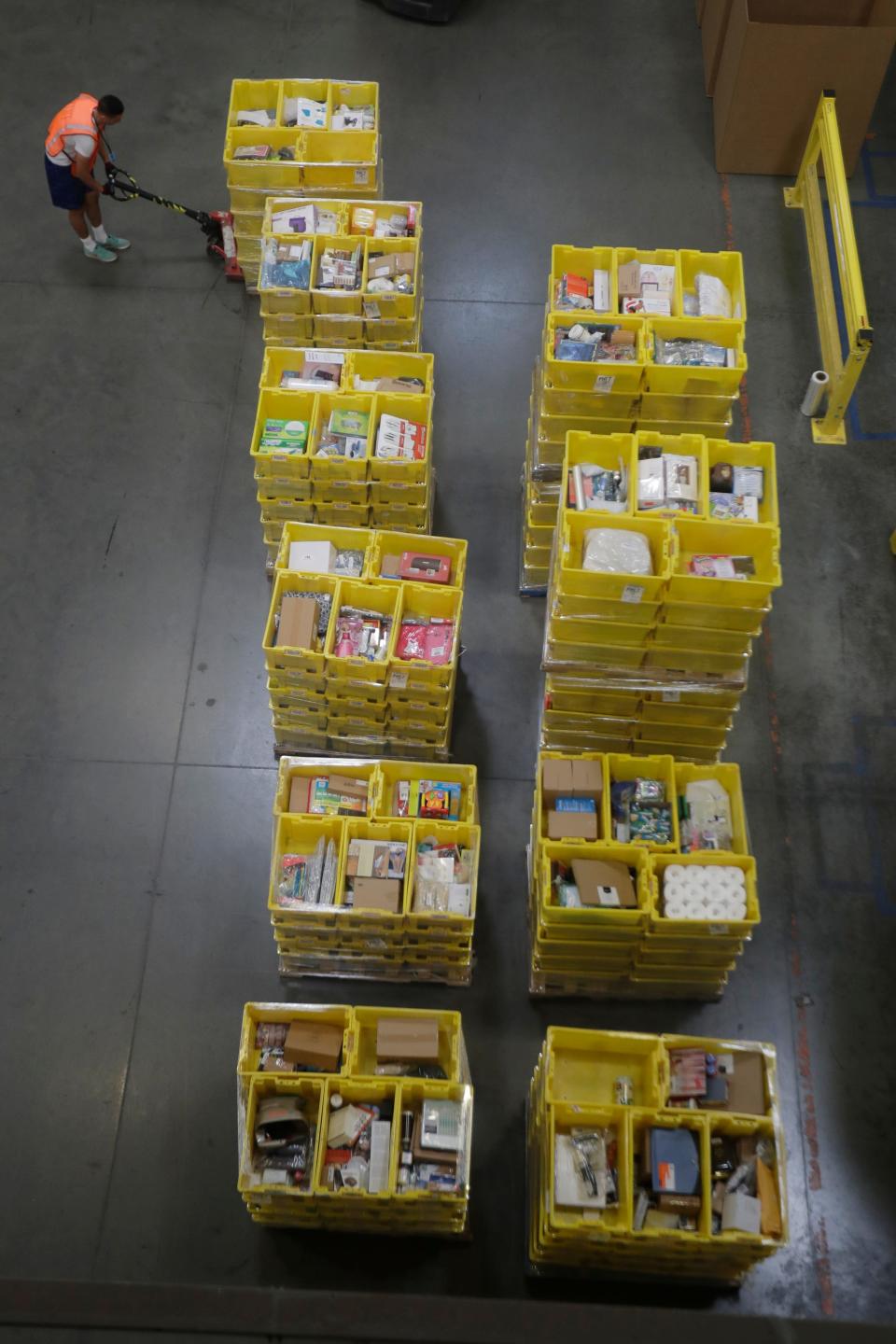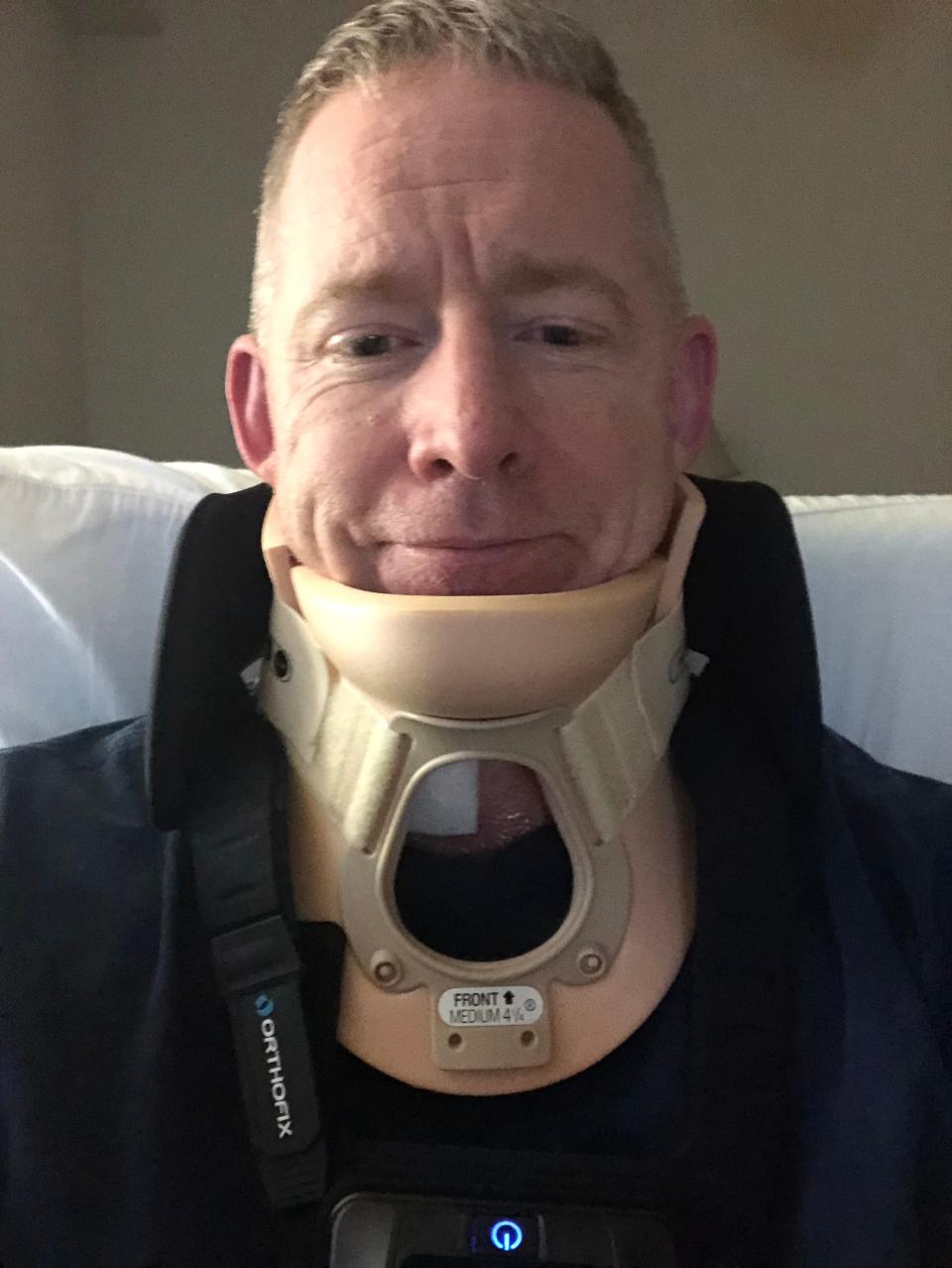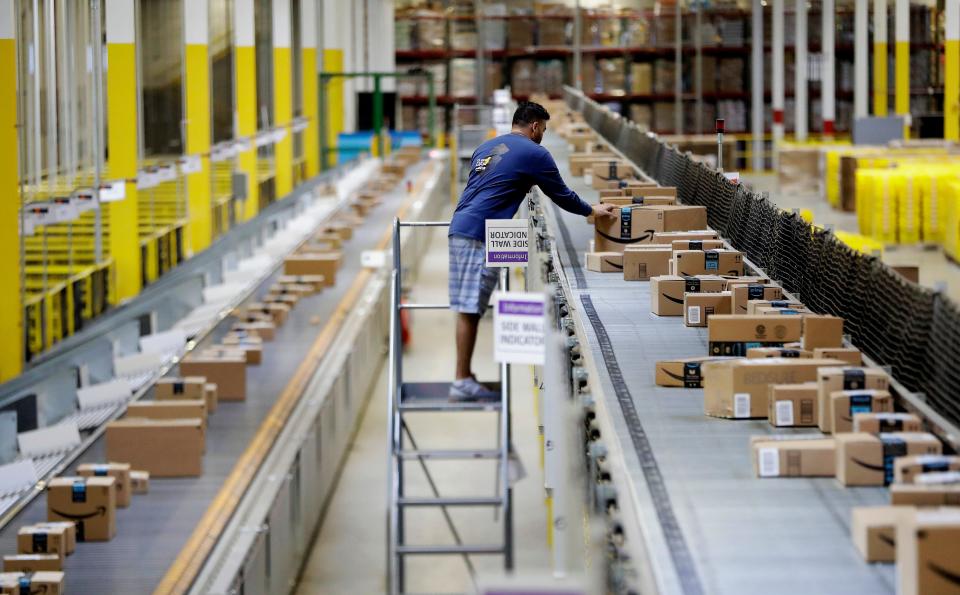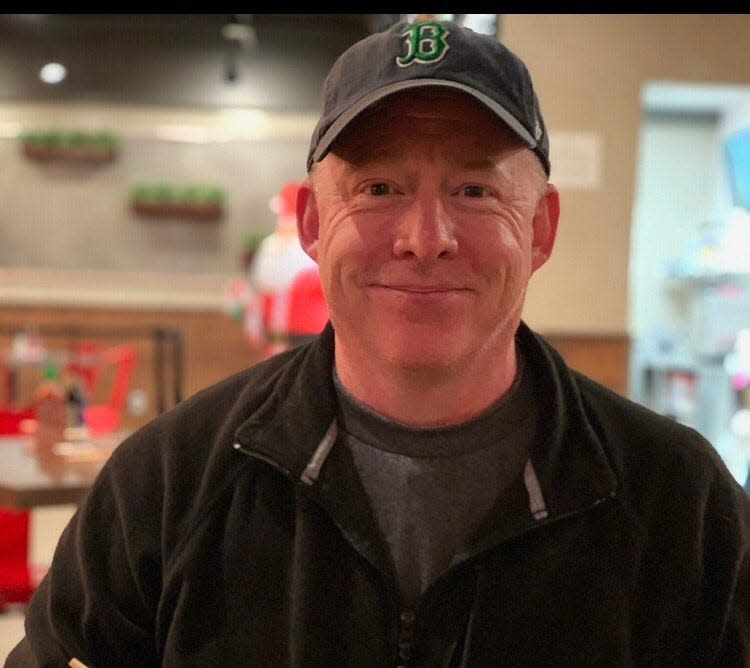Hoisting heavy bins, racing the rush of orders, Amazon doesn’t keep employees like me safe
I am no stranger to hard work. I grew up working my grandparents’ farm and spent over 20 years in emergency medical and fire services. I retired early but did not think it was the end of my working days. I dreamed of working in aviation or in the legal field.
At 52, I sought employment at my local Amazon warehouse because I understood Amazon had educational benefits that would assist me in my next career. My dream of Amazon as a stepping stone to a degree quickly turned into a nightmare.
It was peak holiday season last December, and I was coming off my lunch break. I climbed the ladder to my assigned area where I worked – the mezzanine conveyor belt system, or what I called the “aorta of the warehouse.” In the warehouse, Amazon orders are organized into "totes" – bins that can weigh up to 25 pounds, not including the products inside them. Then the tote is placed on a conveyor belt to prepare it for shipping to the customer.
When I reached the conveyor belt system, I was greeted by bright warning lights and deafening air horn alerts to several blockages in the aorta. Totes filled with products spilled across the floor and conveyor system.

My supervisor joined me, repeatedly gathering spilled products and removing the totes from the belt so we can clear the line and allow it to reset. The totes we removed from the line we then needed to place on a separate conveyor belt to merge the totes back into the primary line for shipping.
Instead of immediately calling for backup or halting the conveyor, we spent 45 minutes trying to gather up the products spilling off the conveyor belt, then my supervisor looked at me and said that I needed help.
His supervisor arrived sometime later, along with maintenance technicians and another Amazon associate. The other associate and I ran on a hamster wheel of chaos with crashing totes, blinking warning lights and air horns redirecting the totes for four hours. No one stopped the conveyor system because it was peak season and we had to keep up the pace.
Keep the products moving
The pain grew slowly at first in my back. By the time I stopped to take a breath, I looked down to realize my light gray T-shirt was now dark gray with sweat. Then, I noticed a mix of numbness and shooting pains spreading from my back to my neck and right arm. My supervisor told me to take some ibuprofen when I got home and put some ice on it.
I drove to work the next morning using only my left arm. Amazon moved me to light duty that day, screening workers for the coronavirus. But it hurt badly to use anything on my right side. Ice was not going to solve my problem: I went to the doctor and found out I had a newly herniated disc.
I had been training for a 5K and was in relatively good shape. While 10-hour days with just two 30-minute breaks were tough, I could get through it. That changed when the system broke down, and there were no procedures in place to keep me safe. The only rule that mattered was to keep the products moving.

Sen. Marco Rubio: Amazon should face unionization drive without Republican support
I am far from alone. Newly released data Amazon reported to the Occupational Safety and Health Administration shows I was one of more than 24,400 Amazon workers to sustain an injury last year – nearly twice the serious injury rate of the non-Amazon warehousing industry as a whole.
An analysis of the data in a new report by the Strategic Organizing Center, a coalition of labor unions, argues that the high injury rate at Amazon is “the predictable outcome of a company that prioritizes speed, growth and profits over the health and safety of its employees.” In the past 10 years, Amazon’s profits have grown astronomically. Executives know there is a problem with safety, but the focus on growth and profits has come at the expense of those of us who help make those profits possible.
“I think we need to do a better job for our employees,” CEO Jeff Bezos wrote in his annual letter to shareholders in April. “We are going to be Earth's Best Employer and Earth's Safest Place to Work."
Count me as skeptical. Workers have been raising the alarm about safety at Amazon for years, and little has changed.

‘Safest place to work’ on earth?
In my warehouse in Tulsa, Amazon distributes a pamphlet to workers that calls us “industrial athletes.” The pamphlet outlines how we should take care of ourselves like professional athletes, and how some positions require us to carry 20,000 pounds or walk 13 miles every day, while burning 400 calories per hour. It recommends we get massages to increase circulation and allow muscles to relax and to eat five to nine servings of fruits and vegetables and lots of fish and nuts.
The thing is, we’re not professional athletes earning millions; we’re regular people who are paid as little as $15 an hour, working 10-hour shifts and forced overtime with little rest in between shifts.

Give people choices: Extra $300 for unemployment gives low-income people jobs choices others have always had
After five months of pain and limited mobility, I finally had surgery to repair my back last month. I have had to deal with Amazon’s endless bureaucracy and paperwork for my ongoing workers' compensation case, and I have several months of physical therapy ahead of me. I hope that by sharing my story, no one else who works at Amazon will have to endure the pain I have experienced.
I don’t believe that Amazon can become “Earth’s Safest Place to Work” without some major changes. These should start with valuing the safety and health of the people who do the work over profits.
Bobby Gosvener is an Amazon distribution facility employee in Tulsa, Oklahoma.
You can read diverse opinions from our Board of Contributors and other writers on the Opinion front page, on Twitter @usatodayopinion and in our daily Opinion newsletter. To respond to a column, submit a comment to letters@usatoday.com.
This article originally appeared on USA TODAY: Injured Amazon warehouse employee: Worker safety is last priority

